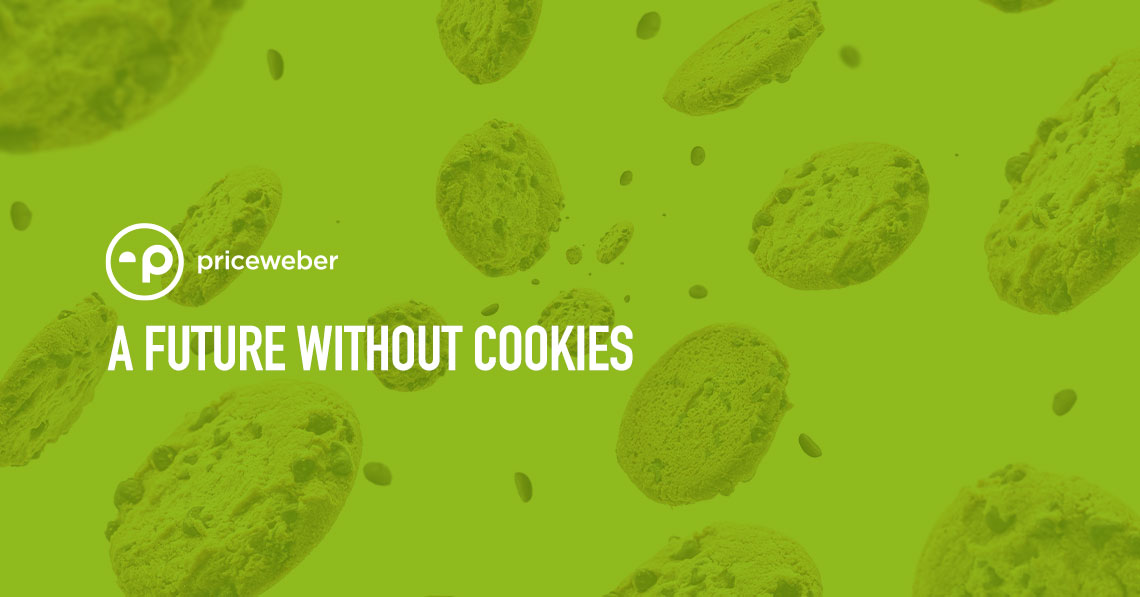For years, we’ve used digital advertising as an efficient and effective means of reaching exactly who we want to reach, with the right message, at the right time. Ad tech and publishers have been competing to offer better targeting, more capabilities and better tracking, and each ad tech call offers something new – some new proprietary technology to make advertising better, stronger, faster. Then came the year of bad news (COVID-19, murder hornets, flying sharks), and it’s all falling apart. Consumer and legislative pressures driving greater privacy requirements in advertising threaten to erase the media targeting and ad tech advancements we’ve become accustomed to incorporating into our plans. As we face a future without using cookies, we have to ask ourselves “what now?” In today’s edition of our Plain Talk series, we’ll delve into what that future will entail, and it’s not as scary as you might think.
What’s a Cookie? (Asking for a friend.)
Before we go any further, this article focuses a lot on the elimination of the third-party cookie. A third-party cookie is a piece of code or data on a browser that tracks a user over time across multiple sites. It’s important for targeting due to the sheer volume of rich data collected over a user’s history, along with the fact that it allows for some important attribution and tracking capabilities. While not all digital targeting options that exist today rely solely on third-party cookies, the majority do in some form.
Future Shock
Before we can talk through the future, let’s lay out what’s been happening with digital advertising for the last few years.
A Timeline
Chrome Follows Safari and Firefox
As you can see, the most recent news from Google, announcing that Chrome will phase out third-party cookies in two years, shouldn’t have come as a shock to most advertisers. We’ve seen this coming, as both Safari and Firefox already limit or block third-party cookies and cross-site tracking. Even so, it’s a big deal.
Right now, about 55-60% of web traffic is addressable by third-party cookies, and the largest percentage of that is from the Chrome web browser. Safari and Firefox make up 40-45% of web traffic and are browsers that do not support or limit third-party cookies. So even though Safari and Firefox have limited or eliminated cookies for years, most advertisers ignored the “cookie crumbling” because you could still reach the majority of people through third-party cookies. That’s hundreds of millions of people you could reach with rich, cross-site data. But, once Chrome limits cookies, that will leave the majority of internet traffic without third-party cookies. That makes it a problem we can’t ignore.
Apple Piles On
On top of this, Apple has made a recent announcement that in 2021, their Identification for Advertisers (IDFA) code will become an opt-in choice for consumers in each individual app. These mobile IDs work similarly to cookies in that they allow us to track and collect information on users over time, just in a different setting. In the meantime, the most recent iOS14 update turns on their ITP (Intelligent Tracking Prevention) feature by default for all browsers, not just the Safari browser. Bottom line, addressable digital advertising is going to see major changes over the next few years.
Good News – Bad News
First, the good news. We have a couple of years to adjust, test new solutions and learn how to live without cookies. We won’t lose cookies right away thanks to Chrome’s phased approach, so we have a unique opportunity to find alternative solutions that will replace this important tool. There are a lot of smart people working on solutions, from The Trade Desk to the iab, to other publishers, ad tech companies and developers. Also, the two-year timeline is a goal from Google, but the new head of Google Ads has said that they won’t just pull the rug out from under us. So, we are not alone, and everyone is looking for viable solutions to move forward while also protecting consumer privacy. The best news is that there are a lot of identifiers that help us figure out who customers are across devices and touchpoints. That includes email addresses, IP addresses, login data, phone numbers, loyalty numbers, device IDs, cookies, addresses, etc. Only cookies and mobile/device IDs are affected for now.
Now for the not-so-good news. There isn’t, and likely won’t be, a singular solution or “magic bullet,” if you will. We’ve become so dependent on cookies, not only as the most efficient solution for our digital targeting needs, but also as a key factor in our ability to measure and attribute digital efforts to our clients’ KPIs and business goals. It’s going to take more than one tool in the toolbox to replace cookies. No one really knows what the answer is yet, but these changes are going to go beyond cookies. Mobile IDs, in addition to cookies, are also going to be affected, given that nearly 45% of smart phone users use an Apple iPhone. Consumer privacy is important, and people are demanding a better internet. So with these changes coming our way in the near future but no clear solutions from Google or ad tech companies, is there anything we can do right away?
Testing, testing
Now is the time to test, test and test some more. We need to get out of our comfort zone and try some of these potential new solutions while we can, and we need to do it now while we still have the KPIs, attribution tools and tracking mechanisms we are used to. We also need to be watching as more advancements are made from the smart people in digital advertising.
What are some of the solutions we can use now?
1. First-party data
Ensure first-party data is onboarded and meets data privacy regulations so that you can continue to use that information in the future. First-party data alone won’t solve all your problems, unless you only want to speak to people you know, but it will be an important tool depending on the goals and other solutions you use. First-party cookies also won’t be affected by these changes, so you can continue to collect important information on users who visit your site (you just won’t be able to continue tracking them once they leave.) Collecting first-party data and finding ways to use that to determine new users to target will be important in the future.
2. Leverage publisher/platform partnerships (who have data we can use)
Publishers have a lot of information to use to target people who visit their site and interact with them. We’ve also seen an increasing number who are requiring a user to create a login which will provide a way to identify them on that site or groups of sites that may share that same ID. We need to find ways to leverage what they know about their audience and partner with these publishers to reach their target. In addition, “walled gardens,” including big platforms like Amazon, Facebook and Google, have tools where you can target without using any personal information and are developing or have developed ways to bring data in, in a safe way, that is privacy and data compliant.
3. No-ID solutions like contextual targeting
Contextual advertising doesn’t require an identifier, making it 100% privacy compliant – it targets users based on the content they are consuming. Most people think of keyword targeting, but there have been a lot of advancements in technology allowing the “machine” to understand not only the context in which keywords appear, but also the context of the environment/setting, and the semantics around those keywords. The technology now allows the computer to read an article on a page the same way a human would. This is potentially the best tool we can begin testing now, as it is completely independent of any identifiers.
4. Big picture, offline signals
There are a lot of things we can look at outside of solely looking at customers’ online behavior. Now is the time to look at some of the offline activities or events that influence decisions. Do weather events play a major role in your customers’ actions? Or time of day, or device? Use what you know about consumers to determine what might affect their engagement in a given moment throughout their day.
5. Artificial intelligence solutions
Artificial intelligence is when computers make informed decisions on their own. Machine learning is one type of AI where computers find patterns in data. This has become really popular over the last decade because of the amount of data available. While the machine will not have access to cookie data in the future, that is just one way to execute AI models. An AI model has the ability to ingest thousands of data points (regardless of what those are) and roll that out to target the right user or group of users. IBM and Nielsen have a promising AI tool around weather data, and others are working on similar cookie-free, custom models.
What are some of the solutions that we might be able to use in the future?
1. Universal IDs – several major players are working on a solution that would create a new universal ID of authenticated data and users. The Trade Desk Universal ID 2.0 is one to watch for future developments.
2. ID Resolution with First-Party Identifiers – some companies are working on using large volumes of PII data hashed out. This could use logged-in IDs or something similar as a new identifier on the internet.
3. Aggregate Identifiers – some solutions, like FloC IDs, would create cohorts or groups of browsers, and you could target that group of users. It would provide privacy but would eliminate one-to-one addressability.
4. No Identifier Solutions – this can include new AI models or publisher-direct relationships where we can target groups of users with no personal identifiers attached. Contextual targeting, as discussed above, is another way to target users without an identifier.
One thing is certain, a post-cookie world is coming, and we will need to make adjustments and continue to do what we can to get ahead of these changes to protect our clients. There likely won’t be a “does-it-all” solution, but we have a lot of tools to get the job done and we’re energized by the variety of solutions and tools in existence or under development. As we wait for these changes to become permanent, it’s critical that brands set aside a portion of their digital budgets to test new options. This is the only way to be truly prepared for a future without cookies.
Track the Changes with Us
Mary Kate Reed and the PriceWeber media team are already diving deep into testing cookie-less addressability. Stay up to date as we learn what works well, what works not so well and what just doesn’t work. If you have any questions about improving your digital media plan today, give us a call at (502) 499-4209 or contact us online, and we’ll be happy to help.



